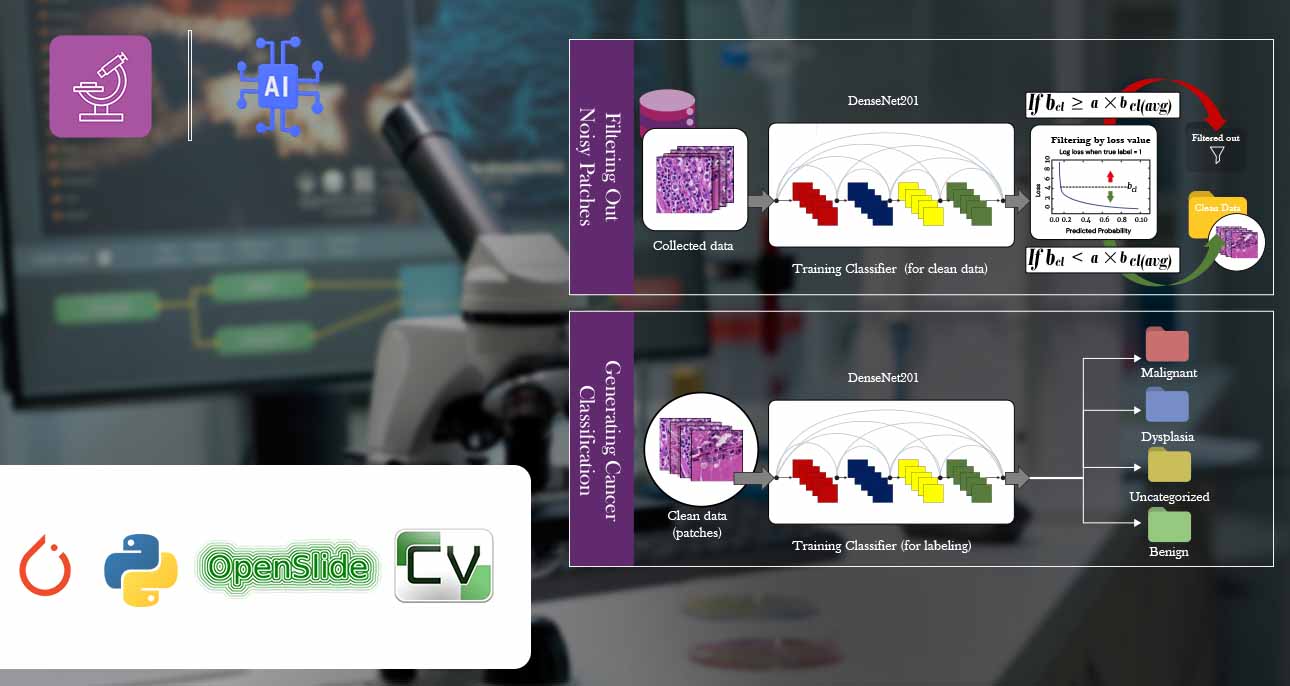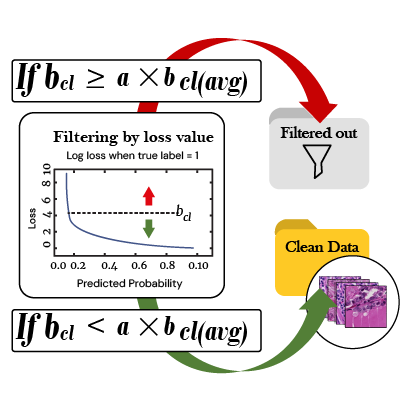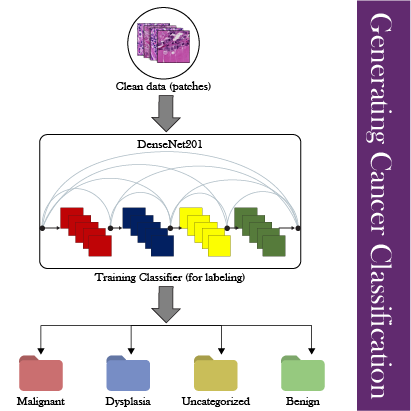Pathologists are pivotal in cancer diagnosis, yet human errors and discrepancies across pathologists, specimen types, and diagnoses lead to notable occurrences of Type-I and Type-II errors in diagnostic outcomes. These errors, stemming from misinterpretation or misidentification, can have profound implications for patient treatment and prognosis. Despite the advancements in medical technology, the subjective nature of pathology and the complexity of cancer specimens present ongoing challenges in achieving consistently accurate diagnoses

ddressing these issues requires a multifaceted approach, including enhanced training, standardization of protocols, and the integration of artificial intelligence tools to augment pathologists' capabilities and minimize diagnostic errors in cancer diagnosis.



Our solution enhances accuracy by reducing patch-based label noise, minimizing Type-II errors in cancer classification. Automated analysis of whole-slide images improves efficiency by reducing manual annotations. Cost reduction stems from decreased reliance on explicit annotations and human intervention, saving resources in training data production. Demonstrated robustness through rigorous testing establishes our method as a reliable tool for cancer diagnosis. Our pioneering research introduces a CNN-based label denoising method, contributing to advancements in digital pathology training data refinement.
The diagnosis of cancer often involves pathologists analyzing whole-slide images, but this process is prone to flaws. Difficulties may arise in precisely marking abnormal regions, inadvertently including benign areas within malignant annotations. This introduces patch-based label noise, leading to false positives and compromising classification accuracy. Resolving this issue is crucial for enhancing automated cancer diagnosis through AI. While pathologists annotate abnormal regions, other regions are automatically classified as benign, but errors may occur due to the inclusion of benign cells within malignant annotations. Streamlining this process is essential for improving the precision of cancer diagnosis and advancing the capabilities of AI in pathology.
Driven by the urgent demand to mitigate label noise in medical applications, our solution presents a formidable patch-based label noise abstaining method. Distinguished from existing approaches, our method stands out for its independence from supplementary learnable parameters or a meticulously annotated training dataset. This innovation empowers Convolutional Neural Networks (CNNs) to yield heightened accuracy in classification outcomes, thereby propelling forward the automated analysis of whole-slide images for cancer diagnosis. By circumventing the need for extensive annotations and additional parameters, our method streamlines the process of noise reduction, fostering more reliable and efficient diagnostic tools in the medical domain.